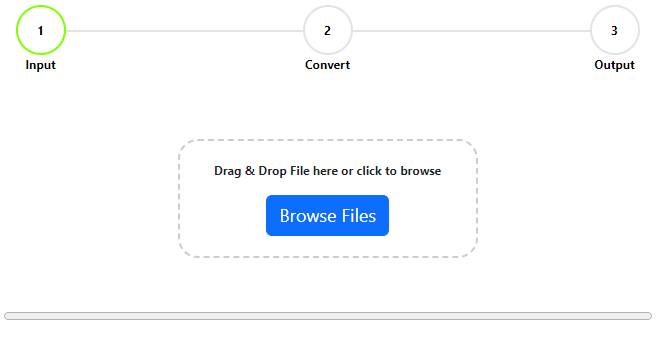PyQGIS Made Simple: A Beginner’s Guide to Python in QGIS
QGIS is an open-source geographic information system (GIS) that allows users to analyze and edit spatial information, in addition to composing and exporting maps.
QGIS supports various types of data formats and provides tools for spatial analysis and visualization. Python is integrated into QGIS, enabling users to extend its capabilities.
If you are reading this, you should be listening to our podcast!
You can use Python in QGIS in several ways:
- PyQGIS: This is the Python API for QGIS. With PyQGIS, you can write scripts and custom applications for QGIS. It allows you to automate tasks, manipulate map layers and elements, and create complex spatial analysis workflows.
- QGIS Python Console: QGIS includes an integrated Python console that allows you to interact with the QGIS application using Python commands. This is useful for quick experimentation and automation tasks within the QGIS interface.
- QGIS Plugins: You can write custom plugins in Python. These plugins can extend the functionality of QGIS, allowing you to add new tools, processing algorithms, or other features. The QGIS community also contributes a wide range of plugins, many of which are written in Python.
- Processing Scripts: QGIS has a processing framework that allows you to create scripts for data processing. These scripts can be written in Python and integrated into the QGIS processing toolbox, providing a GUI for users to input parameters and execute the script.
- Python in QGIS Project Files: Python scripts can be embedded in QGIS project files (.qgz/.qgs) for automation and customization of projects.
Accessing the Python Console in QGIS
- Open QGIS: Start by launching your QGIS application.
- Open the Console: Go to
Plugins>Python Consoleor simply use the Python icon in the toolbar. This will open the Python console within QGIS.
Features of the Python Console
- Interactive Shell: You can type Python commands directly and see the results immediately.
- Script Editor: For more complex tasks, you can write multi-line scripts. This is useful for creating and testing longer scripts.
- Auto-completion and Syntax Highlighting: The console provides suggestions for code completion and highlights syntax, making it easier to write code.
- Access to the PyQGIS API: You can access the entire PyQGIS API, allowing you to interact with and manipulate map layers, features, and QGIS settings.
Basic Tasks You Can Perform
- Layer Manipulation: Add, remove, or modify map layers.
iface.addVectorLayer("/path/to/your/shapefile.shp", "layer_name", "ogr")- Feature Iteration: Loop through features in a layer and read or modify attributes.
layer = iface.activeLayer()
for feature in layer.getFeatures():
print(feature["attribute_name"])- Map Navigation: Zoom in, zoom out, pan, and refresh the map canvas.
iface.mapCanvas().zoomIn()
iface.mapCanvas().refresh()- Creating Geometries: Create new geometrical features like points, lines, and polygons.
from qgis.core import QgsPoint, QgsFeature, QgsGeometry
point = QgsGeometry.fromPointXY(QgsPoint(10.0, 10.0))- Running Processing Algorithms: Automate spatial analysis by running processing tools.
processing.run("algorithm_name", parameters)Tips for Using the Python Console
- Experiment in Small Steps: Test small snippets of code to see immediate results and understand how the API works.
- Refer to Documentation: The PyQGIS documentation is a valuable resource for understanding the classes and methods available.
- Save Your Scripts: If you write a useful script, save it so you can reuse it later.
Understanding the Processing Framework
- Processing Toolbox: A collection of tools and algorithms in QGIS that can be used for data processing. It includes built-in algorithms and those provided by third-party plugins.
- Script Editor: A part of the Processing Toolbox where you can write and edit Python scripts.
Writing a Processing Script
- Access the Script Editor: In QGIS, open the Processing Toolbox, then find the Script Editor. Here, you can write new scripts or edit existing ones.
- Basic Structure of a Script: A processing script typically includes:
- Imports: Import necessary modules (e.g.,
from qgis.core import ...). - Algorithm Definition: Define your algorithm by subclassing
QgsProcessingAlgorithm. - Parameters and Outputs: Define input parameters and output layers or data.
- Process Algorithm Method: The core of the script where data processing happens.
- Define Algorithm Metadata: Include metadata like name, group, and icon for the algorithm.
- Script Execution: Implement the logic for data processing within the
processAlgorithmmethod. This is where you read input parameters, execute processing tasks, and set the output.
Five examples of basic processing scripts for QGIS.
These scripts are beginner-friendly and showcase various common tasks that can be automated using Python in QGIS.
1. Loading a Vector Layer
This script loads a vector layer (like a shapefile) into the QGIS interface.
##Load_Vector_Layer=name
##File_path=string
from qgis.core import QgsVectorLayer, QgsProject
layer = QgsVectorLayer(File_path, "Loaded Layer", "ogr")
if not layer.isValid():
print("Layer failed to load!")
else:
QgsProject.instance().addMapLayer(layer)2. Buffering Features
This script creates a buffer around features in a specified layer.
##Buffer_Features=name
##Input_layer=vector
##Buffer_distance=number 1000
##Output_layer=output vector
from qgis.core import QgsProcessingFeatureSourceDefinition
from qgis import processing
params = {
'INPUT': Input_layer,
'DISTANCE': Buffer_distance,
'OUTPUT': Output_layer
}
processing.run("native:buffer", params)3. Calculating the Area of Polygons
A script to calculate the area of each feature in a polygon layer and add this as a new attribute.
##Calculate_Area=name
##Input_layer=vector
##Area_field_name=string area
from qgis.core import QgsField, QgsExpression, QgsExpressionContext, QgsExpressionContextUtils
layer = processing.getObject(Input_layer)
layer.dataProvider().addAttributes([QgsField(Area_field_name, QVariant.Double)])
layer.updateFields()
expression = QgsExpression('$area')
context = QgsExpressionContext()
context.appendScopes(QgsExpressionContextUtils.globalProjectLayerScopes(layer))
for feature in layer.getFeatures():
context.setFeature(feature)
feature[Area_field_name] = expression.evaluate(context)
layer.updateFeature(feature)4. Exporting Layer to CSV
This script exports a given vector layer to a CSV file.
##Export_to_CSV=name
##Input_layer=vector
##Output_file=file
from qgis.core import QgsVectorFileWriter
layer = processing.getObject(Input_layer)
QgsVectorFileWriter.writeAsVectorFormat(layer, Output_file, "utf-8", layer.crs(), "CSV")5. Selecting Features by Attribute
A script to select features based on a specified attribute and value.
##Select_By_Attribute=name
##Input_layer=vector
##Field_name=field Input_layer
##Field_value=string
layer = processing.getObject(Input_layer)
layer.selectByExpression('"{}"=\'{}\''.format(Field_name, Field_value))Integrating Script into Processing Toolbox
- Save the Script: After writing the script, save it within the processing scripts directory of QGIS.
- Reload Scripts: In the Processing Toolbox, refresh or reload scripts to make your new script appear.
Using the Script
- Run the Script: Your script will now be listed in the Processing Toolbox under the specified category. You can run it like any other processing tool.
- User Inputs: When the script is executed, a GUI will prompt the user to input the necessary parameters you defined.
Tips for Script Development
- Testing and Debugging: Regularly test your script for any errors and debug as needed.
- Documentation: Comment your code and provide clear instructions for users.
- Utilize Existing Algorithms: You can call other processing algorithms within your script, combining multiple steps into a single workflow.
- Performance Considerations: Optimize your script for performance, especially when dealing with large datasets.
Frequently Asked Questions About Using Python in QGIS:
1. What is PyQGIS?
- PyQGIS is the Python library for QGIS. It allows users to automate QGIS tasks, manipulate GIS data, and create custom plugins and scripts. PyQGIS gives you access to the QGIS application’s features and functionalities, enabling programmatic control over GIS projects and data.
2. How do I start using Python in QGIS?
- To start using Python in QGIS:
- Open QGIS: Launch the application.
- Access Python Console: Go to
Plugins>Python Consoleor click the Python icon. - Begin Coding: You can now start typing Python commands or scripts directly into the console.
- Learn PyQGIS: Familiarize yourself with the PyQGIS library for more complex tasks.
- Explore Plugins: You can also write Python scripts and create plugins using the Plugin Builder.
3. What version of Python does QGIS use?
- QGIS typically uses the Python version that it was compiled against. As of my last update, QGIS 3.x versions use Python 3. It’s always good to check the specific Python version in the QGIS installation documentation or by executing
import sys; print(sys.version)in the QGIS Python Console.
4. Can I use external Python libraries in QGIS?
- Yes, external Python libraries can be used in QGIS, provided they are compatible with the version of Python that QGIS is using. You can install these libraries using Python’s package manager
pip. However, it’s important to ensure that the installation paths are correctly configured so that QGIS can locate and use these libraries.
5. How do I install Python plugins in QGIS?
- To install Python plugins in QGIS:
- Open the Plugin Manager: Go to
Plugins>Manage and Install Plugins.... - Search for Plugins: Use the search bar to find available plugins.
- Install Plugin: Select the desired plugin from the list and click ‘Install Plugin’.
- Enable Plugin: Some plugins might need to be enabled from the plugin list.
- Use the Plugin: Once installed and enabled, the plugin can be accessed from the QGIS interface.
- Open the Plugin Manager: Go to
6. How do I access the Python Console in QGIS?
- To access the Python Console in QGIS:
- Open QGIS: Launch the QGIS application.
- Find the Console: Go to the menu bar, click on
Plugins, and selectPython Console. Alternatively, you can use the Python Console icon on the toolbar if it’s available. - Start Using the Console: The console will appear as a docked window at the bottom of the QGIS interface, where you can start typing and executing Python commands.
7. Can I execute SQL queries through the Python Console in QGIS?
- Yes, you can execute SQL queries in the Python Console by using the appropriate PyQGIS functions and classes. This often involves creating a database connection (using
QgsDataSourceUriandQgsVectorLayerfor example), and then executing SQL commands using that connection. It’s a powerful way to interact with and manipulate your GIS data.
8. Is it possible to automate repetitive tasks using the Python Console?
- Absolutely. The Python Console in QGIS is a great tool for automation. You can write Python scripts to automate repetitive tasks such as batch processing of GIS data, updating layer attributes, or even generating maps. This can significantly improve efficiency and consistency in your GIS workflow.
9. How can I use the Python Console to manipulate map layers?
- You can use the Python Console to perform a wide range of operations on map layers, including:
- Adding or removing layers: Using functions like
addVectorLayer()orremoveMapLayer(). - Changing layer properties: Like symbology, labels, and visibility.
- Editing features: Add, delete, or modify features in a layer.
- Running analysis: Apply spatial analysis or processing algorithms to layers.
- The PyQGIS API provides a comprehensive set of tools for these tasks.
- Adding or removing layers: Using functions like
10. What are some common Python commands used in the QGIS Python Console?
- Some common Python commands used in the QGIS Python Console include:
- Layer Management:
iface.addVectorLayer(),iface.activeLayer(),iface.removeLayer(). - Map Navigation:
iface.mapCanvas().zoomIn(),iface.mapCanvas().zoomOut(),iface.mapCanvas().refresh(). - Feature Iteration: Looping through a layer’s features using
layer.getFeatures(). - Running Processing Tools: Using
processing.run()to execute geoprocessing algorithms. - Accessing Layer Attributes: Such as
layer.fields(),feature['fieldname'].
- Layer Management:
Certainly! Here are detailed answers to each question in the Processing Scripts section related to QGIS:
11. How do I create a custom processing script in QGIS?
- Steps to Create a Custom Processing Script:
- Open Script Editor: In QGIS, open the Processing Toolbox, then find and click on ‘Create New Script’.
- Write Your Script: Use Python to write your script. This involves defining a class that extends
QgsProcessingAlgorithm, setting up input and output parameters, and implementing the processing logic in theprocessAlgorithmmethod. - Define Metadata: Include necessary information like name, group, and icon.
- Save and Test the Script: Save the script in the processing scripts directory. You can then find and run your script in the Processing Toolbox to test its functionality.
12. Can I use Python to automate spatial analysis in QGIS?
- Yes, Python can be used to automate spatial analysis in QGIS through processing scripts. These scripts can perform a variety of tasks, such as spatial calculations, data manipulation, and applying GIS algorithms. By using the PyQGIS API within these scripts, you can automate complex GIS workflows.
13. How do I add parameters to a QGIS processing script?
- Adding Parameters:
- In your script, define parameters within the
initAlgorithmmethod using classes likeQgsProcessingParameterFeatureSource,QgsProcessingParameterRasterLayer,QgsProcessingParameterNumber, etc. - Specify parameter names, types, descriptions, and other properties.
- These parameters will be used to collect input from users when they run the script in the Processing Toolbox.
- In your script, define parameters within the
14. Can processing scripts be shared with other QGIS users?
- Yes, processing scripts can be shared with other QGIS users. Simply share the Python script file (.py) with them. They can place this file in their QGIS processing scripts directory. Ensure they have the same QGIS version and necessary dependencies to run the script.
15. What are the best practices for debugging processing scripts in QGIS?
- Debugging Best Practices:
- Test Frequently: Test your script regularly while writing it to catch errors early.
- Use Print Statements: Insert print statements to track variable values and flow of execution.
- Check QGIS Log Messages: The Log Messages Panel in QGIS can provide insights into what’s happening when the script runs.
- Handle Exceptions: Use try-except blocks to catch and understand exceptions.
- Simplify Your Script: If you encounter issues, simplify your script to isolate the problem.
- Consult PyQGIS Documentation: Ensure you’re using the API correctly according to the latest documentation.
Certainly! Here are detailed answers for each question in the PyQGIS section:
16. What are the capabilities of the PyQGIS library?
- PyQGIS Capabilities:
- GIS Data Manipulation: Reading, editing, and creating spatial data in various formats.
- Map Rendering and Printing: Generating map renderings, layouts, and print compositions.
- Spatial Analysis: Executing spatial operations like buffering, intersecting, and overlaying.
- Automation of Tasks: Automating tasks such as updating layer attributes, batch processing, and data import/export.
- Custom Plugin Development: Creating custom plugins to extend the functionality of QGIS.
- Interfacing with QGIS GUI: Accessing and modifying the QGIS user interface, including map canvas, toolbars, and panels.
17. How do I access and modify GIS data through PyQGIS?
- Accessing and Modifying GIS Data:
- Loading Layers: Use
QgsVectorLayerorQgsRasterLayerto load GIS data. - Accessing Features: Iterate over features in a layer using
getFeatures()method. - Editing Features: Start an edit session with
layer.startEditing(), then add, modify, or delete features. - Saving Changes: Commit changes to the layer with
layer.commitChanges(). - Spatial Queries: Perform spatial queries using methods like
intersects(),contains(), etc.
- Loading Layers: Use
18. Can PyQGIS be used for creating custom map layouts and reports?
- Yes, PyQGIS can be used for creating custom map layouts and reports. It involves:
- Creating a Layout: Use
QgsPrintLayoutto define a new layout. - Adding Map Items: Add map views, legends, scale bars, and text labels.
- Styling the Layout: Apply styles and configure layout settings.
- Exporting: Export the layout to various formats like PDF, image, or SVG.
- Creating a Layout: Use
19. Are there any resources for learning PyQGIS for beginners?
- Resources for Learning PyQGIS:
- QGIS Documentation: The official QGIS website provides comprehensive documentation and tutorials.
- Books and E-Books: Several books and online resources are specifically dedicated to learning PyQGIS.
- Online Courses: Websites like Udemy, Coursera, or LinkedIn Learning offer courses on QGIS and PyQGIS.
- Community Forums: Platforms like GIS Stack Exchange and the QGIS User Group provide community support.
20. How is PyQGIS different from other Python GIS libraries?
- Differences from Other GIS Libraries:
- Integration with QGIS: PyQGIS is specifically designed for QGIS and is tightly integrated with its features and functions.
- GUI Interaction: Unlike many other GIS libraries, PyQGIS allows direct interaction with the QGIS GUI.
- Plugin Development: PyQGIS is the primary tool for developing plugins for the QGIS platform.
- Comprehensive GIS Suite: While other libraries might focus on specific aspects of GIS, PyQGIS offers a wide range of capabilities, from basic data handling to advanced spatial analysis and map rendering.





